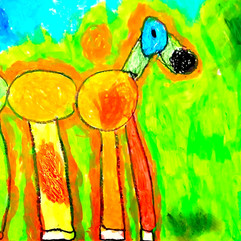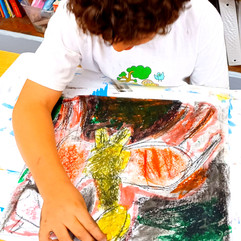Marino Marini
- Serene
- Sep 24, 2023
- 2 min read
Marino Marini
Italy 1901-1980

The images of the horse can be seen throughout art history so his week we studied the art of Sculptor Marino Marini who was inspired by ancient cultures and horses and combined elements of both the classical and contemporary in his artwork. Marini's sculptures, which are iconic and timeless, served as a bridge between a mythical past and the modern world. At the age of sixteen, he enrolled in the Academy of Fine Arts in Florence, where he initially focused on painting and etching. However, after encountering Auguste Rodin and being influenced by Italian sculptors of his time, he fully committed himself to three-dimensional art.
Throughout his career, he experimented with various materials such as terracotta, wood, plaster, and bronze, a characteristic that became integral to his artistic expression. Marini drew inspiration from antiquity, particularly Etruscan terracotta, as well as Northern European sculpture, merging these influences to create his own distinct themes. He attended the Accademia di Belle Arti in Florence in 1917, and by 1922, he had dedicated himself primarily to sculpture while still appreciating the value of painting. From 1929 until 1940, Marini served as a professor at the Scuola d’Arte di Villa Reale in Monza, near Milan. Notably, in 1936, he received the Prize of the Quadrennial of Rome. In 1940, Marini accepted a professorship in sculpture at the Accademia di Belle Arti di Brera in Milan.
His work gained international recognition, including participation in the 'Twentieth-Century Italian Art' exhibition at the Museum of Modern Art in New York City in 1944. In 1952, Marini was awarded the Grand Prize for Sculpture at the Venice Biennale, and in 1954, he received the Feltrinelli Prize at the Accademia del Lincei in Rome. His monumental sculptures continue to thrive worldwide, with one of them being installed in The Hague in 1959. Notably, a dedicated museum showcasing Marini's work can be found in the former church of San Pancrazio in Florence, as well as in renowned art collections such as the Tate Collection in London, the Peggy Guggenheim Collection in Venice, the Norton Simon Museum, and the Hirshhorn Museum and Sculpture Garden in Washington, D.C. In 1973, a permanent exhibition of Marini's art opened at the Galleria d’Arte Moderna in Milan, and in 1978, his work was featured in a Marini show at the National Museum of Modern Art in Tokyo.


The art from this week, inspired by Marino
and horses was created with several techniques.
We talked about form, shape and texture as the
class sketched and worked on their initial drawings.
Layering a combination of oil pastels and paint sticks they were able to re-create some of the similarities in his etchings and paintings. For several it was a new experience and form of expression and I they approached it with enthusiasm.











































Comments